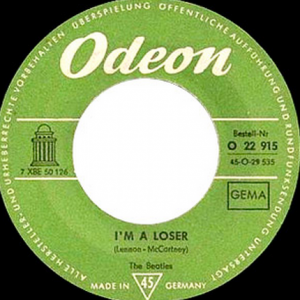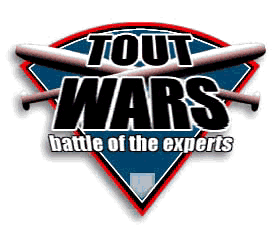A couple of years ago I received a call from the accomplished and winning fantasy baseball player, Larry Schechter, who had it in mind to write a book that told all he knew about Winning Fantasy Baseball. Those last three words became the title of his widely reviewed and warmly received book, released last year, but when I mentioned in that conversation that I was working on a book that would tell what I had learned in 20+ years of fantasy baseball and real baseball research, he sounded unsure.
“Well, if you’re doing one will there room for another?”
I encouraged him, told him to get on it. His story was the story of a winner, the man who captures the prize. He was the guy everyone wants to be, the guy who wins every year, and I told him I was sure his secrets would be of great value to fantasy baseball readers, including me.
I started playing fantasy baseball in 1982, in a league started at Inside Sports magazine, which published Dan Okrent’s first piece about the original Rotisserie League. That was the magazine story that changed the world, but for some reason Inside Sports made up their own game with some very strange idiosyncratic rules, called the Stardust League.
My partner, Jon Glascoe, and I had a few rough years to start. We made the rookie mistake of valuing our fantasy players as if they had their real life value. But for the next few years I think it is true that we were all of us floundering. No one knew the true fantasy value of a player, and so the bidding was mostly random, based on hometown preferences and hunches. You could say, we were working it out.
I know that each year I worked on a different “empirical” valuation system (first stars, then letter grades), and may have made progress, but Jon and I were awed by the play of Bruce Buschel and Hugh Sweeny, which focused each year on players who both hit homers and stole bases. Not the most homers, not the most steals, but the guys who got the most combined.
It was while trying to unsort that synergistic dynamite that I came upon the notion that each category had its own value, and that the synergy wasn’t a result of these guys’ combined skills, but rather that owners willingly paid extra for the biggest homer hitters and the biggest base stealers, which brought down the prices of the productive guys who did both well, not great.
That year I calculated actual dollar prices of the player’s performance the previous year for the first time, and Jon and I used that as a way to determine where to draw the line in bidding. That year we bought a winning team, and won year after year after that. Some will say it was because we bought Cecil Fielder his first year back from Japan, and Howard Johnson his first year with the Mets, which we did, but even in a keeper league (especially one with only three keeps), you have to execute the rest of the way, and we did—using dollar values I calculated.
At the same time, in a sister league playing with the same rules, called Tiffany, my buddy Jack Barth and I were on a similar streak. We won three times in four years (we owned Cecil and Hojo there, too, helpfully), but there were the prices, too, which changed the way I looked at the game.
It was about this time that I discovered John Benson, first, and then Alex Patton, both of whom had their own systems for calculating dollar values. I learned from Benson how to convert qualitatives like BA and ERA into countable numbers. I learned from Patton a lesson I’d first taken from Bill James, which is that information goes down much more easily when the writing is a pleasure. I also learned that everyone I admired was playing the original Rotisserie rules.
Not long afterward, in 1993, Bruce Buschel invited me into the American Dream League, the first AL rotisserie league, which started in 1981. Ironically, I was replacing his former Stardust League partner, Hugh Sweeny, who had been kicked out of the league. The year was 1993. I quit the Stardust League so that I could focus on Roto.
 A couple years later I started writing for ESPN and was invited into the first expert league, USA Today’s LABR, and a few years after that some of us broke off from LABR and started Tout Wars, which is 17 years old this year. Between the ADL, LABR, and Tout Wars I’ve played close to 40 seasons of rotisserie baseball, and not ever been in first place on the final weekend.
A couple years later I started writing for ESPN and was invited into the first expert league, USA Today’s LABR, and a few years after that some of us broke off from LABR and started Tout Wars, which is 17 years old this year. Between the ADL, LABR, and Tout Wars I’ve played close to 40 seasons of rotisserie baseball, and not ever been in first place on the final weekend.
Until this weekend. I’m writing this sitting in a birch grove on a hilltop outside near Ascutney Vermont. The Saturday games are about to start and I’m half a mile from wifi. I’m a half a point ahead of a team that would have been close to buried today, except Steve Stoneburn was able to add the Red Sox new Cuban wonder, Rusney Castillo, this week. In other words, my team is trending down.
But I ‘m not unhappy. For all that struggle, and for all the potential heartbreak, I never thought of myself as a loser until Larry talked about writing his book. Up until then I enjoyed playing, and not finishing first seemed well, mostly inevitable. There are 12 teams in the league. I play against fantasy baseball experts in all my leagues. If we were all equally talented, in any 20-year period three or four teams might not come in first. I understand that, but the more I thought about it the harder it was to work on my book.
“How do I introduce myself in the introduction as anything but a loser, “ I wondered.
The joy of research and searching for abstract information, was diminished. It was time to take winning seriously. I did, in my preseason prep, and I now think improbably that work has mostly paid off. If I can get through the weekend.



You must be logged in to post a comment.